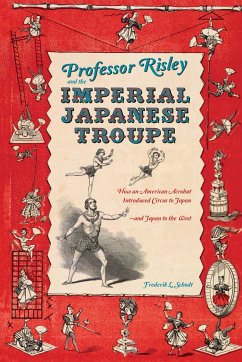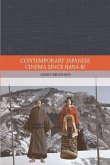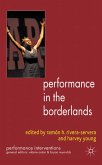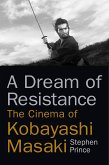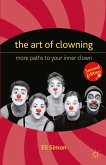Frederik L Schodt
Professor Risley and the Imperial Japanese Troupe
How an American Acrobat Introduced Circus to Japan--And Japan to the West
Schade – dieser Artikel ist leider ausverkauft. Sobald wir wissen, ob und wann der Artikel wieder verfügbar ist, informieren wir Sie an dieser Stelle.
Frederik L Schodt
Professor Risley and the Imperial Japanese Troupe
How an American Acrobat Introduced Circus to Japan--And Japan to the West
- Gebundenes Buch
- Merkliste
- Auf die Merkliste
- Bewerten Bewerten
- Teilen
- Produkt teilen
- Produkterinnerung
- Produkterinnerung
The true tale of an American impresario, Japanese acrobats, and a circus tour adventure; richly illustrated.
Andere Kunden interessierten sich auch für
![The Encyclopedia of Japanese Horror Films The Encyclopedia of Japanese Horror Films]() The Encyclopedia of Japanese Horror Films129,99 €
The Encyclopedia of Japanese Horror Films129,99 €![Japanese Cinema in the Digital Age Japanese Cinema in the Digital Age]() Mitsuyo Wada-MarcianoJapanese Cinema in the Digital Age46,99 €
Mitsuyo Wada-MarcianoJapanese Cinema in the Digital Age46,99 €![Contemporary Japanese Cinema Since Hana-Bi Contemporary Japanese Cinema Since Hana-Bi]() Adam BinghamContemporary Japanese Cinema Since Hana-Bi125,99 €
Adam BinghamContemporary Japanese Cinema Since Hana-Bi125,99 €![Performance in the Borderlands Performance in the Borderlands]() Performance in the Borderlands38,99 €
Performance in the Borderlands38,99 €![A Dream of Resistance A Dream of Resistance]() Stephen PrinceA Dream of Resistance49,99 €
Stephen PrinceA Dream of Resistance49,99 €![The Art of Clowning The Art of Clowning]() EThe Art of Clowning27,99 €
EThe Art of Clowning27,99 €![Women on the Move Women on the Move]() Roger GillesWomen on the Move23,99 €
Roger GillesWomen on the Move23,99 €-
-
-
The true tale of an American impresario, Japanese acrobats, and a circus tour adventure; richly illustrated.
Produktdetails
- Produktdetails
- Verlag: Stone Bridge Press
- Seitenzahl: 336
- Erscheinungstermin: 4. Dezember 2012
- Englisch
- Abmessung: 231mm x 155mm x 30mm
- Gewicht: 635g
- ISBN-13: 9781611720099
- ISBN-10: 1611720095
- Artikelnr.: 35360955
- Herstellerkennzeichnung
- Libri GmbH
- Europaallee 1
- 36244 Bad Hersfeld
- gpsr@libri.de
- Verlag: Stone Bridge Press
- Seitenzahl: 336
- Erscheinungstermin: 4. Dezember 2012
- Englisch
- Abmessung: 231mm x 155mm x 30mm
- Gewicht: 635g
- ISBN-13: 9781611720099
- ISBN-10: 1611720095
- Artikelnr.: 35360955
- Herstellerkennzeichnung
- Libri GmbH
- Europaallee 1
- 36244 Bad Hersfeld
- gpsr@libri.de
Frederik L. Schodt is a translator and author of numerous books about Japan, including The Astro-Boy Essays, Dreamland Japan, Native American in the Land of the Shogun, and The Four Immigrants Manga. He often served as Osamu Tezuka’s English interpreter. In 2009 he received the The Order of the Rising Sun, Gold Rays with Rosette for his contribution to the introduction and promotion of Japanese contemporary popular culture.
Table of contents
Credits
Foreword/Introduction
A brief reflection on the now-forgotten 19th century Western craze for
Japanese acrobats, its relationship to the Japonisme movement, and its
parallels to the 21st century J-pop invasion.
Act 1. Setting the Stage.
The Imperial Japanese Troupe, led by Professor Risley, arrives in San
Francisco from Yokohama, and astounds the local citizens. But they have to
compete with another Japanese acrobatic troupe, which had beaten them to
the city by nearly a month.
Act 2. Who Was Professor Risley?
The early years of Risley, showing his remarkable trajectory in life, and
how he became an acrobat and impresario in the United States and Europe,
with an international name recognition and celebrity rivaling the most
famous modern pop stars.
Act 3. Going for Gold
In the late 1850s, Risley heads west, to California, Oregon, Hawaii, New
Zealand, and Australia, following the trail of gold-generated wealth. He
makes a successful living as an entertainer on the American and Australian
frontier, performing for audiences who crave amusement.
Act 4. Into Asia
During the American Civil War, in the first half of the 1860s, Risley
became an participant in the just-developing Asian entertainment circuit,
taking his own full circus to Calcutta, Singapore, Manila, Bankok, Hong
Kong, and Shanghai, to name a few cities.
Act 5. Yokohama, Japan
In 1864, Risley arrives in Yokohama from Shanghai with his circus, thus
becoming the first person to introduce Western-style circus into Japan.
Because he is not allowed to tour outside of Yokohama, his performers
desert him. He remains in Yokohama, and introduces ice cream into Japan. In
1866, he hits upon the idea of taking Japanese acrobats and jugglers to
Paris Exposition Universelle. His troupe members receive the first official
travel permits granted to ordinary citizens in Japan.
Act 6. Taking America
In 1867, Risley's Imperial Japanese Troupe takes America by storm,
conquering the hearts and minds of citizens in San Francisco (see chapter
1), Philadelphia, New York, Boston, Baltimore, and Washington, D.C. They
meet with President Andrew Johnson and General Ulysses S. Grant, among
other notables.
Act 7. At the Exposition
At the Paris Exposition, in the nearby Cirque Napoleon, the Imperial
Japanese Troupe wins the hearts of the citizens of Paris, even though they
are competing with another Japanese acrobatic group. In Paris they meet
with Prince Akitake, the younger brother of the Tokugawa Shogun.
Act 8. The Long Way to London
When the theater they had reserved burns down in London, the Imperials tour
the British provinces first, cross over to Holland and Belgium, and then
open in London. Despite competition from numerous other Japanese acrobatic
troupes, they win the hearts of Londoners, and perform before the Royal
family.
Act 9. The Matter of the Contract
After conquering England, the Imperials tour Spain and Portugal, and then
return to France. They face increasing difficulty, and are caught in a
revolution in Spain. Their contract with Risley is nearly up, and because
of their agreement with the Japanese government, it is time to go home.
Act 10. Final Acts
At the end of 1869, half of the Imperial Troupe returns to Japan, and the
rest stay with Risley another year. The Imperial Troupe continues to be
successful, but never the way they were in the beginning. Meanwhile, in
Japan a revolution has taken place, and their entire world has been
overturned.
Afterword
A summary of what it all means.
* End Notes
* Bibliography
* Index
Credits
Foreword/Introduction
A brief reflection on the now-forgotten 19th century Western craze for
Japanese acrobats, its relationship to the Japonisme movement, and its
parallels to the 21st century J-pop invasion.
Act 1. Setting the Stage.
The Imperial Japanese Troupe, led by Professor Risley, arrives in San
Francisco from Yokohama, and astounds the local citizens. But they have to
compete with another Japanese acrobatic troupe, which had beaten them to
the city by nearly a month.
Act 2. Who Was Professor Risley?
The early years of Risley, showing his remarkable trajectory in life, and
how he became an acrobat and impresario in the United States and Europe,
with an international name recognition and celebrity rivaling the most
famous modern pop stars.
Act 3. Going for Gold
In the late 1850s, Risley heads west, to California, Oregon, Hawaii, New
Zealand, and Australia, following the trail of gold-generated wealth. He
makes a successful living as an entertainer on the American and Australian
frontier, performing for audiences who crave amusement.
Act 4. Into Asia
During the American Civil War, in the first half of the 1860s, Risley
became an participant in the just-developing Asian entertainment circuit,
taking his own full circus to Calcutta, Singapore, Manila, Bankok, Hong
Kong, and Shanghai, to name a few cities.
Act 5. Yokohama, Japan
In 1864, Risley arrives in Yokohama from Shanghai with his circus, thus
becoming the first person to introduce Western-style circus into Japan.
Because he is not allowed to tour outside of Yokohama, his performers
desert him. He remains in Yokohama, and introduces ice cream into Japan. In
1866, he hits upon the idea of taking Japanese acrobats and jugglers to
Paris Exposition Universelle. His troupe members receive the first official
travel permits granted to ordinary citizens in Japan.
Act 6. Taking America
In 1867, Risley's Imperial Japanese Troupe takes America by storm,
conquering the hearts and minds of citizens in San Francisco (see chapter
1), Philadelphia, New York, Boston, Baltimore, and Washington, D.C. They
meet with President Andrew Johnson and General Ulysses S. Grant, among
other notables.
Act 7. At the Exposition
At the Paris Exposition, in the nearby Cirque Napoleon, the Imperial
Japanese Troupe wins the hearts of the citizens of Paris, even though they
are competing with another Japanese acrobatic group. In Paris they meet
with Prince Akitake, the younger brother of the Tokugawa Shogun.
Act 8. The Long Way to London
When the theater they had reserved burns down in London, the Imperials tour
the British provinces first, cross over to Holland and Belgium, and then
open in London. Despite competition from numerous other Japanese acrobatic
troupes, they win the hearts of Londoners, and perform before the Royal
family.
Act 9. The Matter of the Contract
After conquering England, the Imperials tour Spain and Portugal, and then
return to France. They face increasing difficulty, and are caught in a
revolution in Spain. Their contract with Risley is nearly up, and because
of their agreement with the Japanese government, it is time to go home.
Act 10. Final Acts
At the end of 1869, half of the Imperial Troupe returns to Japan, and the
rest stay with Risley another year. The Imperial Troupe continues to be
successful, but never the way they were in the beginning. Meanwhile, in
Japan a revolution has taken place, and their entire world has been
overturned.
Afterword
A summary of what it all means.
* End Notes
* Bibliography
* Index
Table of contents
Credits
Foreword/Introduction
A brief reflection on the now-forgotten 19th century Western craze for
Japanese acrobats, its relationship to the Japonisme movement, and its
parallels to the 21st century J-pop invasion.
Act 1. Setting the Stage.
The Imperial Japanese Troupe, led by Professor Risley, arrives in San
Francisco from Yokohama, and astounds the local citizens. But they have to
compete with another Japanese acrobatic troupe, which had beaten them to
the city by nearly a month.
Act 2. Who Was Professor Risley?
The early years of Risley, showing his remarkable trajectory in life, and
how he became an acrobat and impresario in the United States and Europe,
with an international name recognition and celebrity rivaling the most
famous modern pop stars.
Act 3. Going for Gold
In the late 1850s, Risley heads west, to California, Oregon, Hawaii, New
Zealand, and Australia, following the trail of gold-generated wealth. He
makes a successful living as an entertainer on the American and Australian
frontier, performing for audiences who crave amusement.
Act 4. Into Asia
During the American Civil War, in the first half of the 1860s, Risley
became an participant in the just-developing Asian entertainment circuit,
taking his own full circus to Calcutta, Singapore, Manila, Bankok, Hong
Kong, and Shanghai, to name a few cities.
Act 5. Yokohama, Japan
In 1864, Risley arrives in Yokohama from Shanghai with his circus, thus
becoming the first person to introduce Western-style circus into Japan.
Because he is not allowed to tour outside of Yokohama, his performers
desert him. He remains in Yokohama, and introduces ice cream into Japan. In
1866, he hits upon the idea of taking Japanese acrobats and jugglers to
Paris Exposition Universelle. His troupe members receive the first official
travel permits granted to ordinary citizens in Japan.
Act 6. Taking America
In 1867, Risley's Imperial Japanese Troupe takes America by storm,
conquering the hearts and minds of citizens in San Francisco (see chapter
1), Philadelphia, New York, Boston, Baltimore, and Washington, D.C. They
meet with President Andrew Johnson and General Ulysses S. Grant, among
other notables.
Act 7. At the Exposition
At the Paris Exposition, in the nearby Cirque Napoleon, the Imperial
Japanese Troupe wins the hearts of the citizens of Paris, even though they
are competing with another Japanese acrobatic group. In Paris they meet
with Prince Akitake, the younger brother of the Tokugawa Shogun.
Act 8. The Long Way to London
When the theater they had reserved burns down in London, the Imperials tour
the British provinces first, cross over to Holland and Belgium, and then
open in London. Despite competition from numerous other Japanese acrobatic
troupes, they win the hearts of Londoners, and perform before the Royal
family.
Act 9. The Matter of the Contract
After conquering England, the Imperials tour Spain and Portugal, and then
return to France. They face increasing difficulty, and are caught in a
revolution in Spain. Their contract with Risley is nearly up, and because
of their agreement with the Japanese government, it is time to go home.
Act 10. Final Acts
At the end of 1869, half of the Imperial Troupe returns to Japan, and the
rest stay with Risley another year. The Imperial Troupe continues to be
successful, but never the way they were in the beginning. Meanwhile, in
Japan a revolution has taken place, and their entire world has been
overturned.
Afterword
A summary of what it all means.
* End Notes
* Bibliography
* Index
Credits
Foreword/Introduction
A brief reflection on the now-forgotten 19th century Western craze for
Japanese acrobats, its relationship to the Japonisme movement, and its
parallels to the 21st century J-pop invasion.
Act 1. Setting the Stage.
The Imperial Japanese Troupe, led by Professor Risley, arrives in San
Francisco from Yokohama, and astounds the local citizens. But they have to
compete with another Japanese acrobatic troupe, which had beaten them to
the city by nearly a month.
Act 2. Who Was Professor Risley?
The early years of Risley, showing his remarkable trajectory in life, and
how he became an acrobat and impresario in the United States and Europe,
with an international name recognition and celebrity rivaling the most
famous modern pop stars.
Act 3. Going for Gold
In the late 1850s, Risley heads west, to California, Oregon, Hawaii, New
Zealand, and Australia, following the trail of gold-generated wealth. He
makes a successful living as an entertainer on the American and Australian
frontier, performing for audiences who crave amusement.
Act 4. Into Asia
During the American Civil War, in the first half of the 1860s, Risley
became an participant in the just-developing Asian entertainment circuit,
taking his own full circus to Calcutta, Singapore, Manila, Bankok, Hong
Kong, and Shanghai, to name a few cities.
Act 5. Yokohama, Japan
In 1864, Risley arrives in Yokohama from Shanghai with his circus, thus
becoming the first person to introduce Western-style circus into Japan.
Because he is not allowed to tour outside of Yokohama, his performers
desert him. He remains in Yokohama, and introduces ice cream into Japan. In
1866, he hits upon the idea of taking Japanese acrobats and jugglers to
Paris Exposition Universelle. His troupe members receive the first official
travel permits granted to ordinary citizens in Japan.
Act 6. Taking America
In 1867, Risley's Imperial Japanese Troupe takes America by storm,
conquering the hearts and minds of citizens in San Francisco (see chapter
1), Philadelphia, New York, Boston, Baltimore, and Washington, D.C. They
meet with President Andrew Johnson and General Ulysses S. Grant, among
other notables.
Act 7. At the Exposition
At the Paris Exposition, in the nearby Cirque Napoleon, the Imperial
Japanese Troupe wins the hearts of the citizens of Paris, even though they
are competing with another Japanese acrobatic group. In Paris they meet
with Prince Akitake, the younger brother of the Tokugawa Shogun.
Act 8. The Long Way to London
When the theater they had reserved burns down in London, the Imperials tour
the British provinces first, cross over to Holland and Belgium, and then
open in London. Despite competition from numerous other Japanese acrobatic
troupes, they win the hearts of Londoners, and perform before the Royal
family.
Act 9. The Matter of the Contract
After conquering England, the Imperials tour Spain and Portugal, and then
return to France. They face increasing difficulty, and are caught in a
revolution in Spain. Their contract with Risley is nearly up, and because
of their agreement with the Japanese government, it is time to go home.
Act 10. Final Acts
At the end of 1869, half of the Imperial Troupe returns to Japan, and the
rest stay with Risley another year. The Imperial Troupe continues to be
successful, but never the way they were in the beginning. Meanwhile, in
Japan a revolution has taken place, and their entire world has been
overturned.
Afterword
A summary of what it all means.
* End Notes
* Bibliography
* Index

